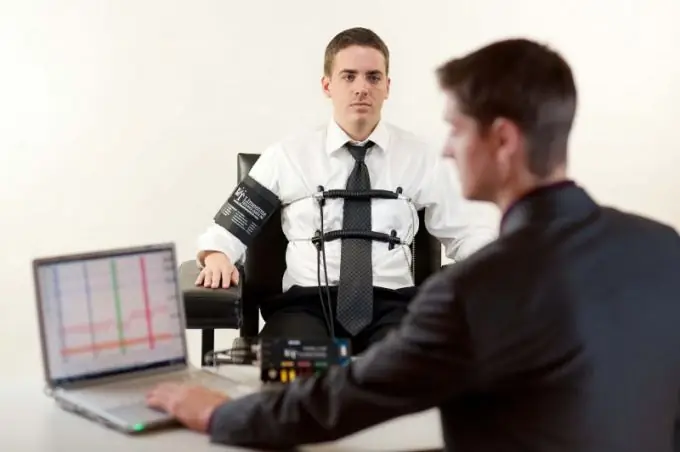A lie detector, also known as a polygraph, is a special device with which a specialist can determine when a person is telling the truth and when he is deviating from it.

The purpose of the lie detector
The lie detector is designed to establish the truth of the facts, events or phenomena that a person is talking about. At the same time, the conclusion about how true the information communicated by him is based on relatively objective data recorded by the device, and not on the personal impression of another person.
It can be very important to check that such messages are valid in some cases. For example, lie detectors are often used in the judicial system and in the work of inquiry bodies, when establishing the truth of the testimony of a witness, suspect or accused can become a decisive factor in solving a particular crime. In addition, a reliable determination of the truthfulness of the information provided by this or that person can release the innocent from punishment.
How a lie detector works
The principle of operation of the lie detector is based on an idea developed by specialists in the field of psychology, which claims that a person who provides false information experiences greater emotions and excitement than in a situation when he speaks the truth, that is, reports information that corresponds to reality.
In turn, these emotions are reflected in the bodily reactions given out by the person, which he is unable to completely control. So, in particular, they manifest themselves in an increase in the heart rate, tremors in the hands or other parts of the body, increased breathing and other symptoms. Therefore, the lie detector is designed to fix these manifestations.
In order to achieve this goal, the device is equipped with special sensors that are attached to the body of a person being tested on a polygraph. Currently, experts use various types of devices, among which there are both digital and analog, and the range of recorded bodily manifestations and reactions to be recorded will depend on the number and nature of the sensors that the polygraph has.
The simplest models usually have several sensors that record the most basic reactions - respiration rate, pulse rate and blood pressure level, as well as the resistance of the skin to electrical impulses, which can vary depending on the psychological state of a person. More complex models are able to record other manifestations, for example, the timbre of the voice, the appearance of tremors in the limbs, and others. As a result, the reliability of the readings of such devices is higher than that of simple modifications.







